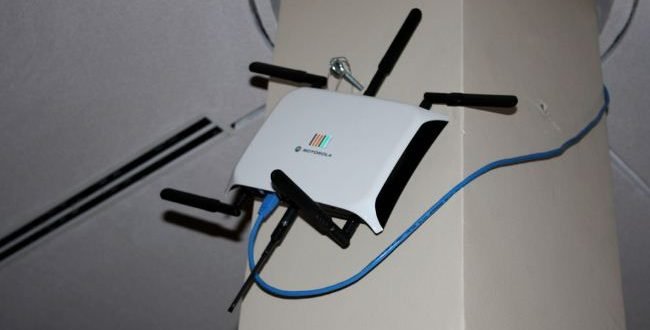From a bit of skill and scissors to precise algorithms and a 3D printer, improving the wifi network of your home is easy if you know how
The signal from the WiFi networks in our home and even in the office can be a source of constant frustration for many of us. There are many ways to fix it with signal extenders or buying better routers. But maybe you do not need to spend money and you can fix it with a little craft and aluminum foil.
The theory is simple: the wifi routers in your house use their antennas (normally two, but the most basic ones will have one or none) to send the signal indiscriminately to 360º around them. If we use a reflective material near the antennas, we can increase the quality of the signal in specific directions.
Let’s start with the basics: place the router in a central place in the home or closer to the rooms where we want a stronger signal. Away from cabinets and pantries and if it can be located at half height because if it is too low a large part of the signal will be eliminated bouncing off the ground.
If we have to go further, we will start with the crafts and create our own reflective extenders. One of these reflective materials of electromagnetic waves is the aluminum included in the homonymous paper that we have in the kitchen.
The first test can be done by folding several pieces to create an arc that wraps part of the antenna and leave the direction where we want to improve the signal. The aluminum will block and rebound part of the signals when they are directed in the other directions. Once we notice that it improves, we can make something more durable with cardboard or cardboard and be wrapping it with a couple of layers of aluminum foil.
But we can go a step further with a little science. Researchers from the University of Dartmouth in New Hampshire have created a small algorithm that designs us the 3D form of a wifi reflector based on a plane of the house and the specific places where we want to increase the signal.
[wp_ad_camp_3]The program is called WiPrint and it is not yet public, but we can learn a little by reading the scientific article that describes it. An “S” shaped reflector surrounding both antennas will increase the signal in rooms located orthogonally to their position. A V-shaped one will increase the signal in the direction of its widest part, and if we turn it over it will create a stronger signal towards its sides.
In the absence of a 3D printer, you can try doubling your own reflector in different ways that are intuitively correct. Think of your router as if it were a person shouting, the wifi signal was the sound that comes out of the mouth and these reflectors were his hands looking for his cries to be heard as far as possible.
Finally, you can try to change the router’s broadcast channel to emit on a slightly different frequency and avoid interference with your neighbors signal. If you live in a block of flats you probably live with dozens of wifi networks and the signal channel can influence. Changing your router’s channel is actually less effective than physical reflectors, but it can work.
Finally, if your router supports 5 GHz connections, we recommend that you use this signal. It may improve the reception in a small house, but signals having a frequency shorter than 2.4 GHz, will go through the walls worse. Some routers support issuing both signals at the same time, try to see which one is best suited to your home.
 MobiTechInfo
MobiTechInfo








